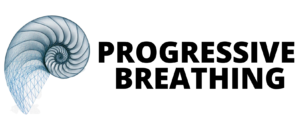The Impact of Nasal Breathing on Cardiovascular and Heart Health
Nasal breathing is a simple yet powerful practice that can significantly enhance cardiovascular and heart health. Unlike mouth breathing, nasal breathing offers numerous physiological benefits that support the heart’s function and overall wellbeing. Understanding how nasal breathing improves cardiovascular health involves examining its effects on heart rate, blood flow, and the body’s stress response.
1. The Science Behind Nasal Breathing
When we breathe through the nose, the air is filtered, humidified, and warmed before it enters the lungs. This process helps maintain optimal lung function and improves oxygen exchange. The nose also produces nitric oxide (NO), a gas that plays a crucial role in cardiovascular health. Nitric oxide helps to dilate blood vessels, leading to increased blood flow and reduced blood pressure. Improved circulation enhances oxygen delivery to vital organs, including the heart, promoting its efficiency and reducing strain.
2. Regulation of Heart Rate
Nasal breathing is closely linked to the regulation of heart rate through a mechanism known as heart rate variability (HRV). HRV refers to the variation in time intervals between heartbeats and is an indicator of the autonomic nervous system’s (ANS) balance. The ANS has two primary components: the sympathetic nervous system, which activates the “fight or flight” response, and the parasympathetic nervous system, which promotes relaxation and recovery.
Breathing through the nose engages the parasympathetic nervous system, leading to a decrease in heart rate and an increase in HRV. This is important because higher HRV is associated with better cardiovascular health, improved resilience to stress, and a lower risk of heart disease. Conversely, chronic stress and low HRV can lead to increased heart rate, elevated blood pressure, and greater risk of cardiovascular problems.
3. Improved Oxygen Utilization and Performance
Nasal breathing enhances the efficiency of oxygen utilization in the body. By encouraging deeper, diaphragmatic breaths, nasal breathing increases the amount of air reaching the lower lungs, where gas exchange is more efficient. This improved oxygen uptake not only benefits heart function but also enhances physical performance and endurance. During exercise or physical activity, nasal breathing can help maintain an optimal heart rate by ensuring that the body receives adequate oxygen without overstimulating the sympathetic nervous system.
4. Stress Reduction and Emotional Wellbeing
Chronic stress is a significant risk factor for heart disease. Nasal breathing can help manage stress by promoting a state of calmness and relaxation. As the heart rate decreases and HRV increases, the body becomes better equipped to handle stressors, reducing the risk of stress-related heart problems. Mindful practices that incorporate nasal breathing, such as yoga and meditation, can also enhance emotional wellbeing, further supporting heart health.
5. The Importance of Heart Rate and Its Implications for Health
Maintaining a healthy heart rate is crucial for overall cardiovascular health. A lower resting heart rate typically indicates better cardiovascular fitness, while a consistently elevated heart rate can signal underlying health issues. Nasal breathing’s ability to lower heart rate and increase HRV is significant for individuals at risk for cardiovascular disease, as it promotes heart health and mitigates risk factors.
Summary
Incorporating nasal breathing into daily routines can lead to profound improvements in cardiovascular and heart health. By optimizing oxygen utilization, regulating heart rate, reducing stress, and enhancing blood flow, nasal breathing offers a simple yet effective tool for promoting a healthy heart. As awareness of the benefits of nasal breathing continues to grow, it can serve as a foundational practice for individuals seeking to enhance their overall health and wellbeing, leading to a healthier heart and a longer life.
Explore 3 Free Nasal Breathing Practices to improve your Heart Health.



